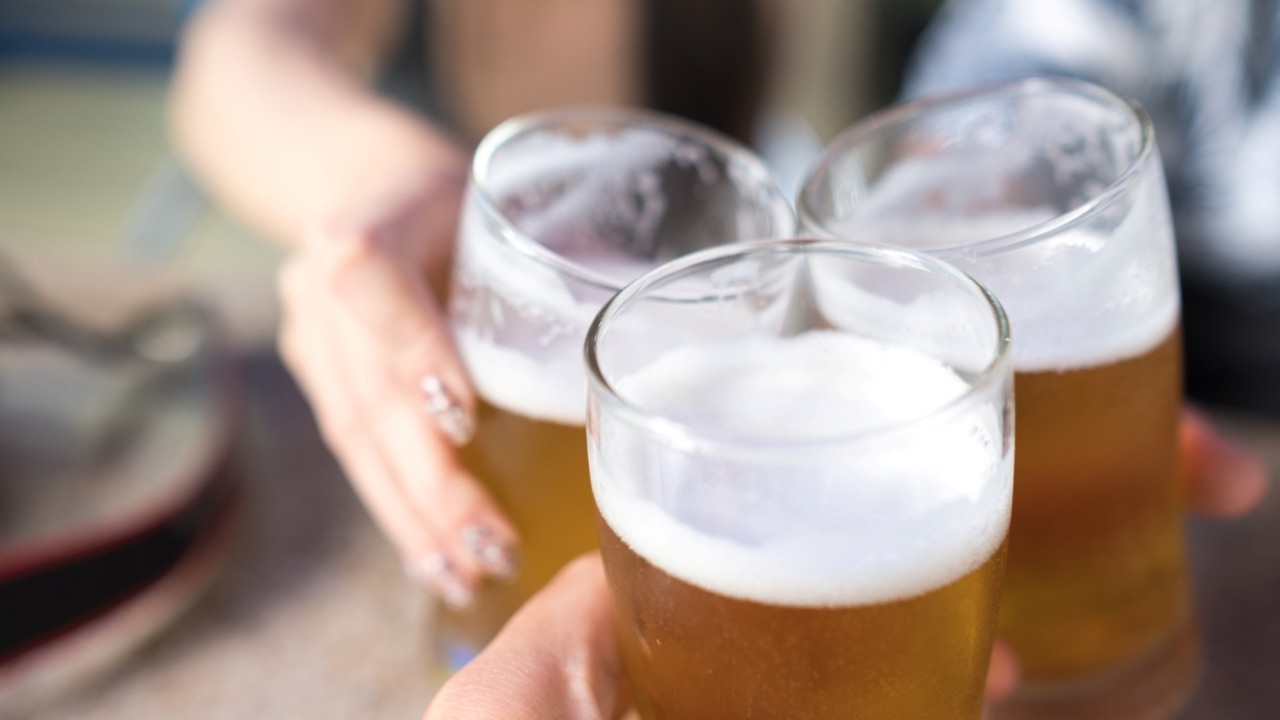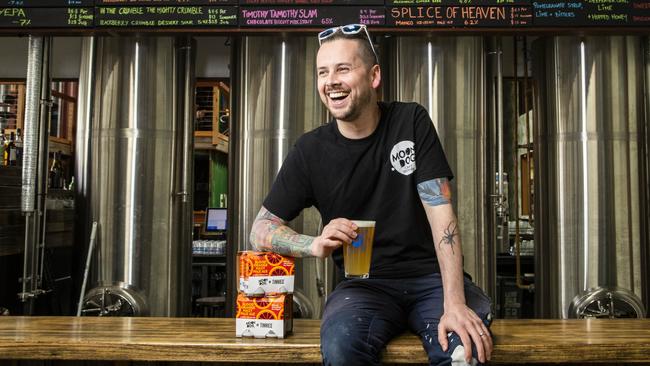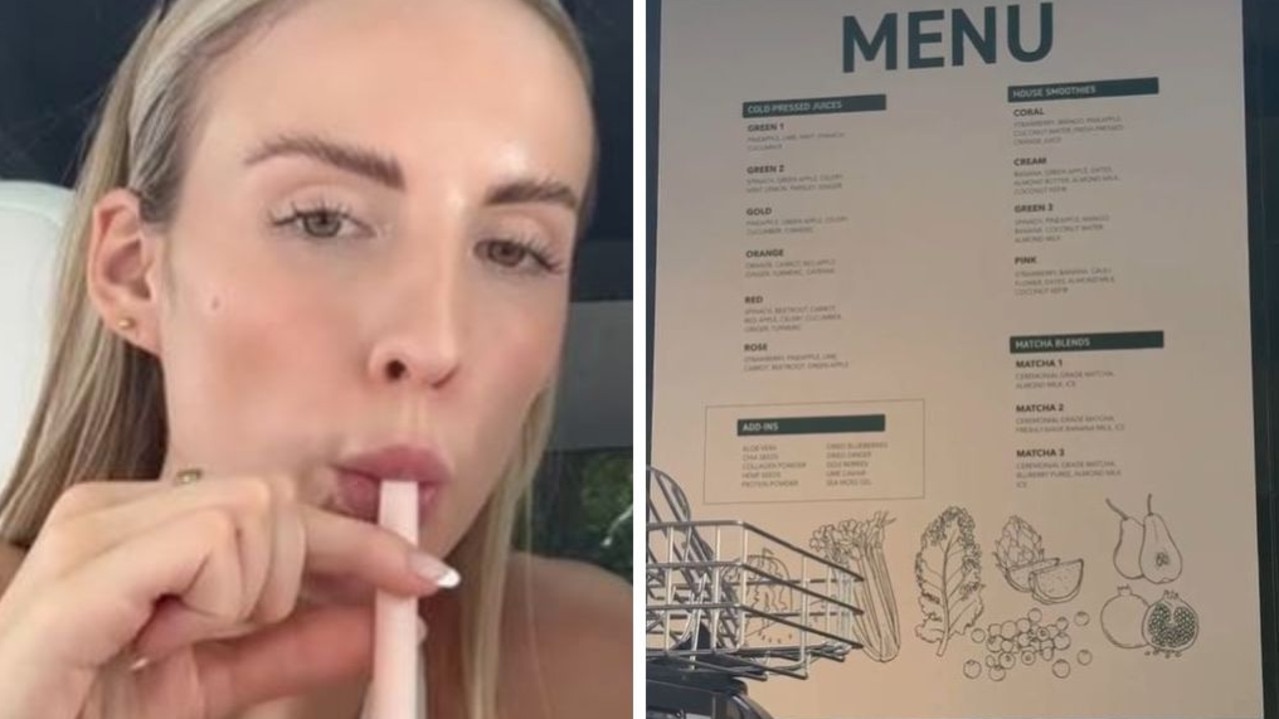In tough times for the brewing business, ‘better for you’ beer is the way of the future
This year’s International Beer Day comes at a tricky time for the brewing business, as cost of living bites. See what the future holds for the industry.

Drinks
Don't miss out on the headlines from Drinks. Followed categories will be added to My News.
This year’s International Beer Day – Friday, August 4 – comes at a slightly sobering time for the Australian brewing industry.
While the amber fluid remains close to the nation’s heart, increased competition, changing drinking habits, recently increased excises and a cost of living crisis all combine to make for tough times for an industry that has been on upward trend for the last decade in terms of the number of breweries opened and variety of styles on offer.
Recent data from Roy Morgan’s Alcohol Consumption Report shows that in the wake of record Covid lockdown driven highs in 2021, the proportion of Australians who drink alcohol was at 67.6% in the 12 months to March 2023, up by 1.3% points since the pre-pandemic period in the 12 months to March 2020 (66.3%).
But in not so great news for the beer business, less than a third (32.2%) of Australians now consume beer, down from 37.6% in the 12 months to March 2020.
The downward trend, largely at the hands of Ready To Drink options (RTDs) and, more recently, the exploding seltzer market, has the brewing industry – from the big mainstream outlets such as Lion and Carlton & United Breweries right through to the smaller independent craft outfits – thinking hard about how to make their products more accessible and attractive to the drinkers of 2023.
Chris Allan, marketing director of Lion, whose brands include Tooheys and XXXX, says that “beer as a category has been challenged in a good way” by some of the entrants into the market and faces twin challenges in the coming year.

“The biggest change we’re facing at the moment is twofold,” Allan says. “It’s around mindful choice options – consumers moderating and finding liquids and beverages that meet their different needs of today. And then the other one that we’re really leaning into is the change in the economy and the cost of living crisis and what that means for us and many others.”
Mindful choice options and a “better for you” mentality, particularly from younger drinkers, is what’s driving the recent rise of low-alcohol and low carb beers and has also helped the mid-strength market become the biggest category in the country. Lion’s flagship lager brands such as Tooheys and XXXX have been around for a century or more, but Allan says the company’s more recent products such as XXXX Zero and the Hahn Ultra Low Carb are in response to the realisation that “beer has had to evolve”.
“We are really thinking about what we do differently – to where consumers are going, not just where they’ve been in the past,” he says
The same trend is hitting the craft end of the beer market with Laurence Kain, managing director of Canberra’s Capital Brewing Co, saying that they are seeing a “real shift away from big, heavy hoppy styles and we’re seeing a shift into like more lager-type, approachable, lower alcohol products”.
“We’re seeing a tremendous amount of growth in the 4% and below products and we’re seeing a lot of decline in the market is really in the 5.5, 6.5, 7% IPAs,” says Kain, highlighting the company’s 3.5% Summit Hazy Mid Pale Ale and the Alc-Less 0% Pacific Ale. “I guess that’s the better for you trend and people becoming more health conscious, which we think is a great thing and we are designing our portfolio of products and our product releases to really fit in line with that.”

The challenge for craft brewers though, is trying to play both sides of the fence by keeping both the aficionados and the health-conscious drinkers happy. Melbourne’s Moon Dog Craft Brewery, which was voted Champion Indie Large Brewery at last year’s Independent Brewers Association Awards, says that the “the changing of tastes and the tightening of purse strings” has affected the craft market and the company had huge success diversifying into RTDs with its Razzler range and seltzers with its Fizzer range.
“If I knew then I’d be a very happy man,” says Moon Dog co-founder Karl Van Buuren when asked what the next 12 months looks like for craft beer. “But I’d like to say packing in really flavoursome and really unique styles in a better-for-you format.”
What the future looks like for craft beer more broadly remains to be seen, particularly after a spate of closures this year as the more than 700 craft breweries around the country goes through a period of consolidation after a decade of growing quickly.
Van Buuren says that having a strong brand and continuing to experiment and make bold and interesting products is the key to longevity.
“In a growth period you will always have people who want to get in on the market but obviously the changing of tastes and the tightening of purse strings is affecting that,” he says, “but I see our place as being at the forefront of innovation in the market.”
Allan agrees that strong brands such as Stone and Wood, which Lion acquired in 2021, Little Creatures and Furphy will survive and thrive but says that “there might be a lot that unfortunately don’t last because it is tough to maintain that flavour of the month for a long period of time”.

But the influence of craft on the mainstream beer market, says Allan, has been a positive for consumers and encourages the industry more broadly to keep innovating and changing with the times.
“Craft has been really good at creating excitement, intrigue and stretching the beer category,” he says. “It’s allowing mainstream brands to again pivot and think about how they cater to either the values that have made us really strong and why people have bought us for 150 years or what we might need to shift to be the drink of tomorrow.”
That said, Allan also sees potential for a resurgence in what he calls the “the classic Australian” lager, particularly as cost of living pressures continue to bite.
“These mainstream brands have been there for generation after generation and will continue to stand through and offer up great value through tough times,” he says.
“It’s their simplicity, their reliability, the quality of the beer that allows people, even if they are doing it tough, to go ‘I just want to have a beer that’s no fuss, that doesn’t really complicate things and I can trust’.
“I think that’s where brands like Tooheys and XXXX, and some of our state based brands like Emu, West End and Boags are really going to allow consumers just to have one less thing to worry about. Beer should be simple and easy to understand, and that’s what they can offer no matter the year.”

SPECIAL OFFERS
● Best bargain beer box: Dainton Refreshing Alcoholic Ginger Beer case of 16, $29 + shipping (rrp $65)
● Limited release mixed pack: Eight hard-to-find limited release craft beers in this smart value bundle, $69.95 + shipping.
● Always awesome mixed pack: Eight curated craft beers from the best of Australian breweries, $59 + shipping.
For the best craft beer deals visits smartcraftbeer.com.au


